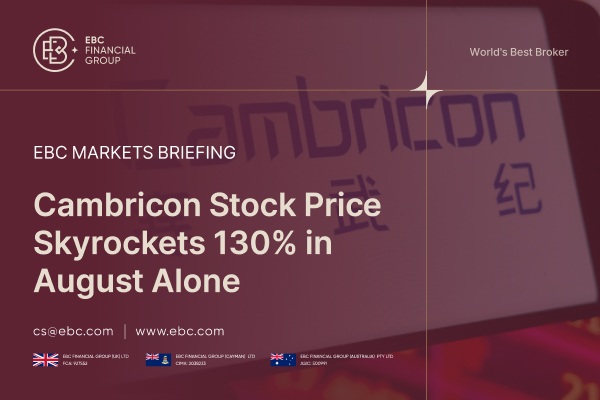In today's fast-paced trading environment, having a reliable and responsive trend indicator is essential. The Hull Moving Average (HMA) stands out for its ability to minimise lag while providing a smooth, accurate representation of price trends.
This makes it a popular choice among traders who want to react quickly to market changes without being misled by noise.
What Is the Hull Moving Average (HMA)?

The Hull Moving Average (HMA) is a technical indicator developed by Alan Hull in 2005 to address the limitations of traditional moving averages. While moving averages like the Simple Moving Average (SMA) and Exponential Moving Average (EMA) are widely used, they often suffer from lag, which can delay Trading signals and cause traders to miss out on optimal entry or exit points. The HMA was specifically designed to reduce this lag while maintaining a smooth line that accurately reflects price action.
The HMA achieves this by using a unique calculation method that combines weighted moving averages and a special smoothing process. The result is an indicator that closely tracks price movements, making it easier for traders to identify trend direction, spot reversals, and make timely trading decisions.
How Is the HMA Calculated?
The Hull Moving Average uses a multi-step process to achieve its fast and smooth characteristics:
Calculate a Weighted Moving Average (WMA) for half the period (n/2).
Calculate a WMA for the full period (n).
Double the WMA of the half period and subtract the WMA of the full period.
Apply a WMA to the result using the square root of the period (√n).
HMA Formula:
HMA(n) = WMA(2 × WMA(n/2) – WMA(n)), √n
Where:
This calculation method allows the HMA to respond quickly to price changes while filtering out much of the market noise that can lead to false signals.
Advantages of the HMA
The Hull Moving Average offers several key benefits for traders:
Reduced Lag: The HMA reacts faster to price changes than most traditional moving averages, helping traders catch trends earlier.
Smoothness: By filtering out short-term fluctuations, the HMA provides a clearer view of the underlying trend.
Versatility: The HMA can be used on any timeframe and with any asset class, including forex, stocks, indices, and commodities.
Clear Signals: The slope and direction of the HMA line provide straightforward signals for trend-following and reversal strategies.
How Traders Use the HMA
1) Trend Identification
One of the primary uses of the HMA is to identify the direction of the prevailing trend. When the HMA is sloping upward, it indicates an uptrend; when it is sloping downward, it signals a downtrend. Because the HMA responds quickly to price changes, traders can spot trend reversals sooner and adjust their strategies accordingly.
2) Entry and Exit Points
The HMA is often used to generate entry and exit signals. For example, a common strategy is to buy when the price crosses above the HMA and sell when the price crosses below it. Some traders also use HMA crossovers, where a short-period HMA crossing above a longer-period HMA signals a potential buy, and a cross below signals a potential sell.
3) Filtering Market Noise
In volatile or sideways markets, traditional moving averages can generate false signals due to their lag and sensitivity to price swings. The HMA's smoothness helps filter out this noise, allowing traders to focus on genuine trend movements and avoid whipsaws.
4) Combining HMA with Other Indicators
The HMA works well when combined with other technical analysis tools. For example, pairing the HMA with momentum indicators like the Relative Strength Index (RSI) or the Moving Average Convergence Divergence (MACD) can help confirm trend strength and improve the reliability of trading signals. Volume analysis can also be used alongside the HMA to validate breakouts or trend continuations.
Practical Tips for Using the HMA
Choose the Right Period: Shorter periods (such as 9 or 14) make the HMA more sensitive to price changes, which is useful for short-term trading. Longer periods (such as 50 or 100) provide a broader view of the trend and are better suited for long-term analysis.
Backtest Your Strategy: Before using the HMA in live trading, test your strategy on historical data to ensure it performs well in different market conditions.
Combine with Risk Management: Always use stop-loss orders and proper position sizing to manage risk, especially when trading in volatile markets.
Adapt to Market Conditions: Adjust the HMA period and combine it with other indicators as needed to suit the specific asset and market environment you are trading.
Conclusion
The Hull Moving Average is a powerful tool for traders seeking a fast and smooth trend indicator. Its unique calculation method sets it apart from other moving averages, providing timely signals and reducing the risk of false entries.
Whether you are a day trader looking for quick trend changes or a long-term investor aiming to confirm major market moves, the HMA can help you make more informed trading decisions.
Disclaimer: This material is for general information purposes only and is not intended as (and should not be considered to be) financial, investment or other advice on which reliance should be placed. No opinion given in the material constitutes a recommendation by EBC or the author that any particular investment, security, transaction or investment strategy is suitable for any specific person.







